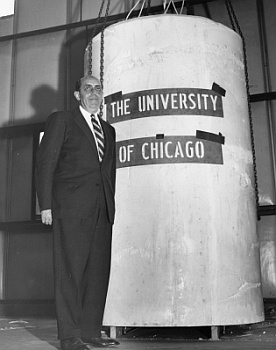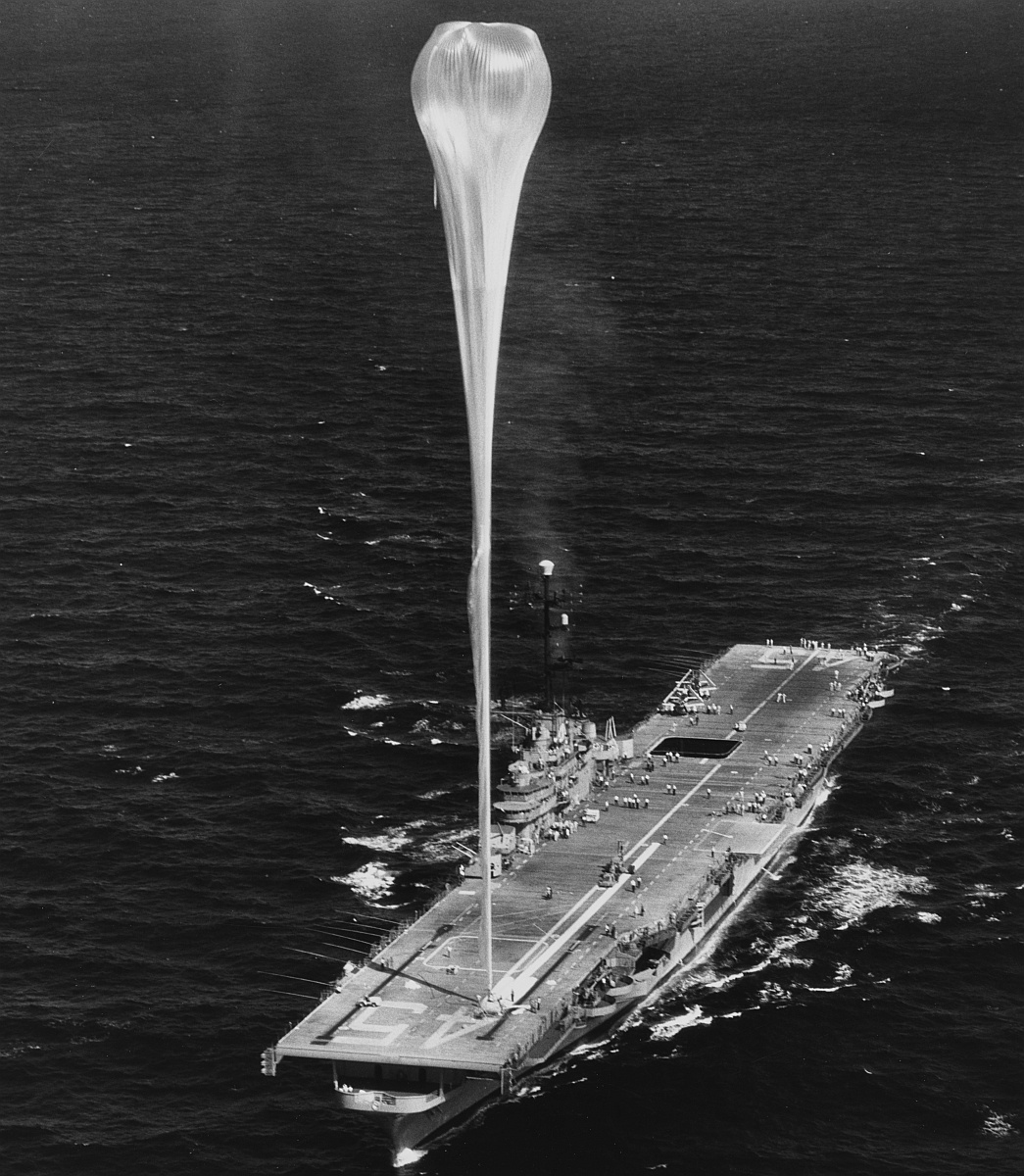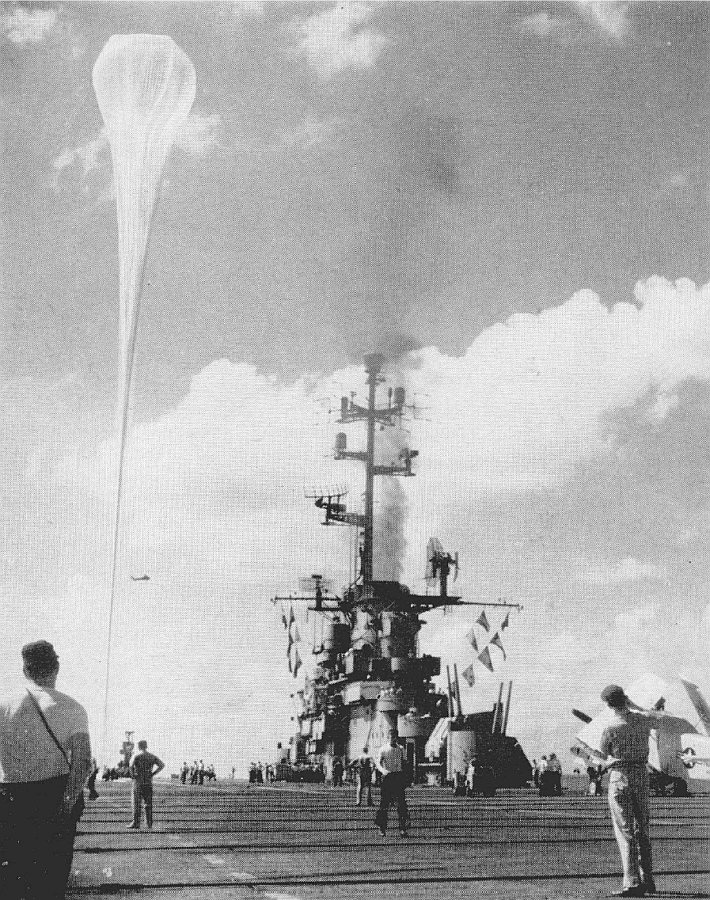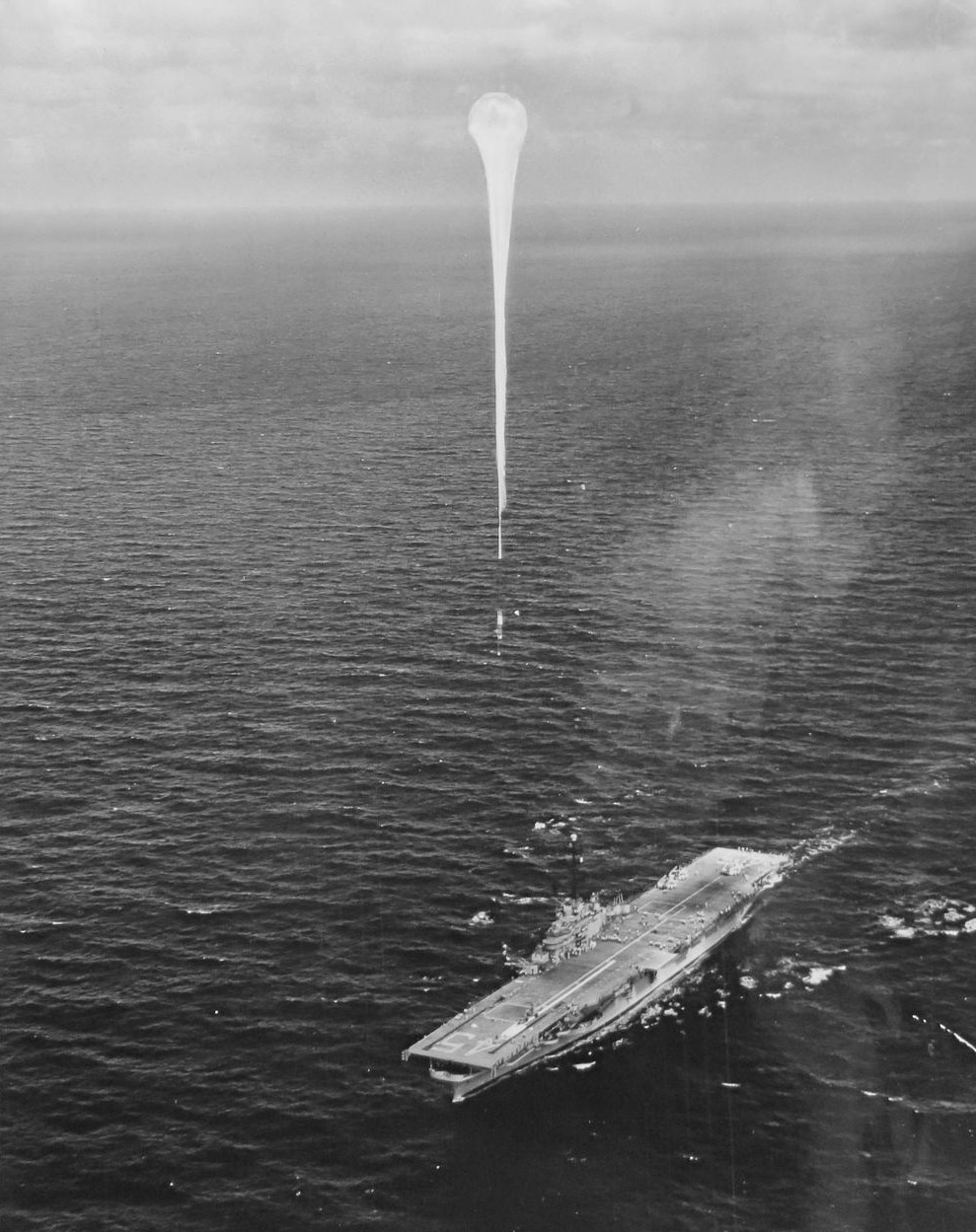Purpose of the flight and payload description
Project ICEF (International Cooperative Emulsion Flights) was an international research effort sponsored jointly by the National Science Foundation and the Office of Naval Research, under the direction of Dr. Marcel Schein, professor of physics at the University of Chicago. The objective of the experiment was to expose in the stratosphere during 24 hours two similar gondolas containing emulsion plates to track the path of particles nuclei created by the collision of cosmic rays with them.
The emulsion plates in each gondola was composed by a stack of 500 special photographic emulsions made by a London firm, measuring 18 x 24 inches, conforming a block weighting near 400 kg. When cosmic rays hit the fine-grain emulsions, they leave microscopic trails, or marks as fingerprints of known or new particles. The collisions can also indicate much about the cosmic ray which created the explosion.
The block was contained in a sealed cilindrical shape gondola made of aluminum, measuring 7 ft long and 3 ft of diameter with a total -full loaded- weight of 800 kgs. At right we can see Dr. Marcel Schein posing along one of the gondolasof the project (click to enlarge).
The best place to launch the huge balloons needed for the task was the deck of an aircraft carrier which sailing with the prevailing winds in open sea, generated an artificial "no wind" condition to allow the vertical inflation and launch of the balloons. For this series of flights the USS Valley Forge was selected, operating in the Caribeean sea, near the Lesser Antilles. The launch operations onboard where in charge of Winzen Research Inc. of Minneapolis.
Footage from the U.S. Department of Defence
Details of the balloon flight

Balloon launched on: 1/30/1960
Launch site: USS Valley Forge (CV-45)
Balloon launched by: Winzen Research Inc.
Balloon manufacturer/size/composition: Zero Pressure Balloon Winzen - 10.000.000 cuft (290 ft.Dia.)
Balloon serial number: 290.75-100x100-V-4
Flight identification number: WRI 861
End of flight (L for landing time, W for last contact, otherwise termination time): 2/1/1961
Balloon flight duration (F: time at float only, otherwise total flight time in d:days / h:hours or m:minutes - ): 26 h 35m
Landing site: 290 miles SW of San Juan, Puerto Rico
Payload weight: 800 kgs
Gondola weight: 800 kgs
The mission nicknamed Skyhook Bravo-Refly was the second flight of the ICEF effort, and was launched on 30 january 1960, from the deck of the USS Valley Forge by vertical method while sailing south of Puerto Rico, in the Caribeean. It transported the same gondola recovered from the 1st ICEF mission performed four days earlier. In the image above can be seen the flight profile of the balloon (right figure).
Once released the balloon promptly rose to a peak altitude of 113.500 feet, whereupon it began a slow descent which halted twelve hours later at 61.000 feet. Ballast adjustment efforts proved ineffective and the balloon continued to hang at the same level. After nearly 21 hours when the balloon appeared to be heading for South America as occured in the first flight and with nightfall approaching, the gondola was released from the balloon. It amerized in a point 240 miles southwest of San Juan, Puerto Rico. The destroyer USS COMPTON recovered the instrument package after being directed to the scene by a Navy hurricane-hunter aircraft. She then steamed for San Juan to transfer the gondola to a special plane of the Military Air Transport Service for its ?ight to Norfolk, Virginia, then on to Chicago.
The emulsion stack acummulated in all 32 hours of exposure: 5 hours from the Skyhook-Bravo flight and 27 hours from the Skyhook-Bravo-Refly.
External references
- An Investigation of Interaction Systematics in Cosmic Ray Events Obtained in the International Cooperative Emulsion Flight Experiment PH.D. Thesis by Clifford Leonard Deney Jr, Louisiana State University (1963)
- Interactions of Heavy Nuclei Having Energy Greater Than 1000 Gev PH.D. Thesis by Raymond Lee Fricken, Louisiana State University (1963)
- Online Library of Selected Images of the USS Valley Forge NavSource Online: Aircraft Carrier Photo Archive
- Project ICEF - the Skyhook 60 flights Physics Today 13, 4, 36 (1960)
- Project Skyhook Nears End; All Balloons Are Gone The Free-Lance Star - Feb 1, 1960
2024If you consider this website interesting or useful, you can help me to keep it up and running with a small donation to cover the operational costs. Just the equivalent of the price of a cup of coffee helps a lot.





